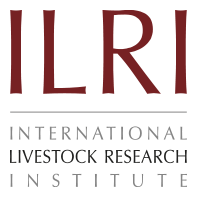Kenana
Origin and distribution: The Kenana cattle breed is among Large East African Zebu and has several strains, namely Rufáai El Hoi, Rufáai El Sherik, Fung, Gezira and White Nile. The breed is believed to have descended from the first zebu introduction into Africa from West Asia. This breed remained largely with semi-nomadic pastoralists in the northern Sudan. They are distributed east of the confluence of the Blue and White Niles, south-east to the Ethiopian border, and the western banks of the Blue Nile to southern Khartoum.
Physical characteristics: They are medium to large in size. Coat colour is white or steel grey with darker shading on the neck and shoulders and a black switch to the tail; blue-grey to white with black shadings on the head, neck hump, hindquarters and legs; horns are black. Calves are reddish-brown at birth turning grey by about six months of age (Maule 1990). The hump is prominent in males and in most cases cervico-thoracic in position; large and has tendency to hang over at the rear (Mason and Maule 1960). They have well-developed dewlap commencing under the chin often as a double fold, and runs well back along the floor of the chest, frequently joining the large umbilical fold (Epstein 1971). They also possess sheath. The udder is well developed. Horns are often loose; females have shorter horns than males (Maule 1990).
Peculiarity: The breed Kenana of northern Sudan has typical dairy characteristics. Consequently, they are considered one of the best milkers in Africa. They are also used for beef and traction.
Breed status: The breed is not at risk of extinction, population estimate in 1994 being 1 500 000 (DAD-IS, 2005) and 1 670 000 (Rege, 1999). However, the breed has been extensively crossed with other breeds during the past 2-3 decades. Increasingly these animals are being kept by sedentary agro-pastoralists at the expense of the nomadic system but still mainly owned by nomadic and semi-nomadic breeders. The figure for 1991 is inflated as it is based on the 1976 survey, using an annual multiplication factor. However it does not take the many droughts, wars and famines into consideration and is also an estimate based on provincial numbers. Kenana were considered in danger of extinction in the early 1980s mainly through indiscriminate cross-breeding and ultimate absorption by exotic breeds, but it now seems that there is no imminent threat of disappearance.
Utility: They are used for milk, draught power and meat. At birth male calf weighs 22-25.3kg and female weigh 21-23.5kg (DAD-IS, 2005; DAGRIS, 2005). Ageeb and Hillers (no date), however, reported an average birth weight of both sexes at 25.2 kg. Average adult live weight for males and females is 400-610 and 300-435kg, respectively (Rege 1999). Average height at withers for males and females was 132-148cm and 124-138cm, respectively (Rege 1999). Age at first calving ranged from 3.2-4.2 years (Ageeb and Hillers, no date; DAGRIS, 2005). According to he same literature sources calving interval for Kenana cattle ranges from 11.7-17.6 months. The breed is known for good milk yield in a rather harsh climate, the milk yield per lactation ranging from 1200 to 4500kg in an average lactation of 240 days. A meta-analysis from 28 literature yielded an average lactation milk yield of 1 931.5 kg (DAGRIS, 2005). Lactation milk yield of these breeds, for example, is higher than that of the following breeds: Boran in Kenya (545-1 814 kg/139-303 days; Payne 1970); Arsi in Ethiopia (809 kg/272 days; Schaar et al. 1981); and Ankole in Uganda (318-817 kg/212-239 days; Payne 1970).
Ageeb A.G. and Hillers J.K. Production and reproduction characteristics of Butana and Kenana cattle of the Sudan. World Animal Review. (Available on the web: http://www.fao.org/ag/aga/agap/frg/feedback/war/u1200b/
u1200b0j.htm)
Epstein H. 1971. The origin of the domestic animals of Africa Volume I. Africana Publishing Corporation. New York. London. Munich. pp. 208-211.
Mason I.L. and Maule J.P. 1960. The indigenous livestock of eastern and Southern Africa. Common wealth Agricultural Bureaux. Farnham Royal, Bucks, England.
Maule J.P. 1990. The cattle of the tropics. Centre for Tropical Veterinary Medicine, University of Edinburgh, Great Britain. 225 pp.
Payne W.J.A. 1970. Cattle production in the Tropics. Volume 1, General introduction and breeds and breeding. Longman Group Ltd: London (UK). 336 pp.
Rege J.E.O. 1999. The state of African cattle genetic resources I. Classification framework and identification of threatened and extinct breeds. FAO/UNEP Animal Genetic Resources Information Bulletin 25: 1-25.
Schaar J., Brannang E. and Meskel L.B. 1981. Breeding activities of the Ethio-Swedish integrated rural development project. Part 2. Milk production of zebu and crossbred cattle. World Animal Review. 37: 31-36.
http://www.fao.org/ag/aga/agap/frg/feedback/war/
u1200b/u1200b0j.htm
http://dad.fao.org/cgi-dad/$cgi_dad.dll/BreedEdit?657,-1,s,Simp




